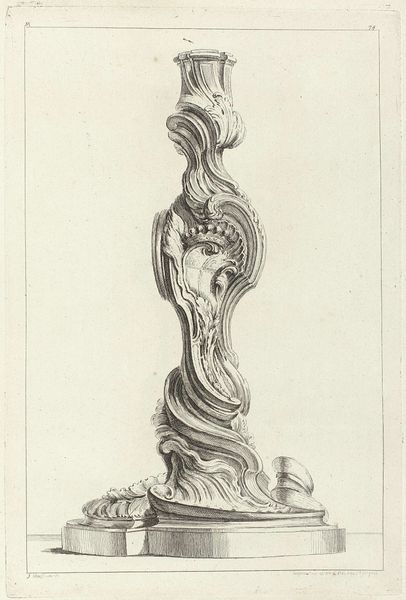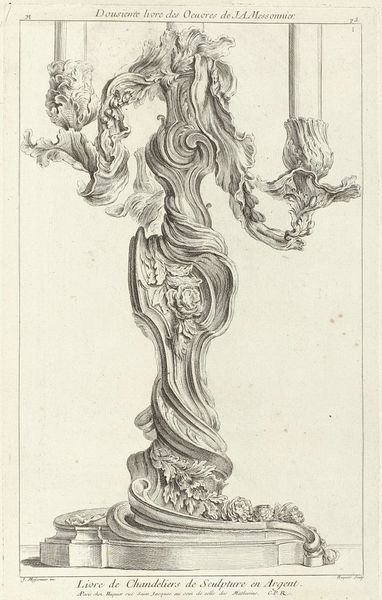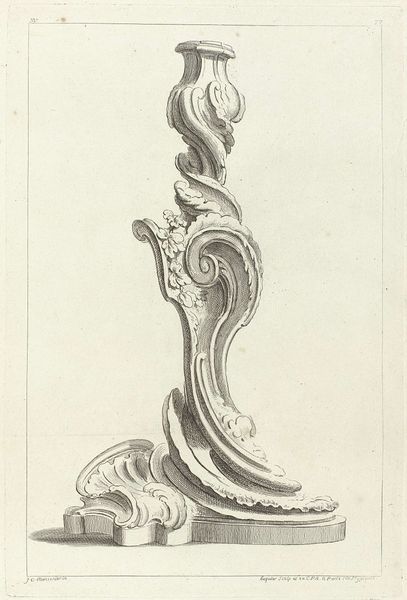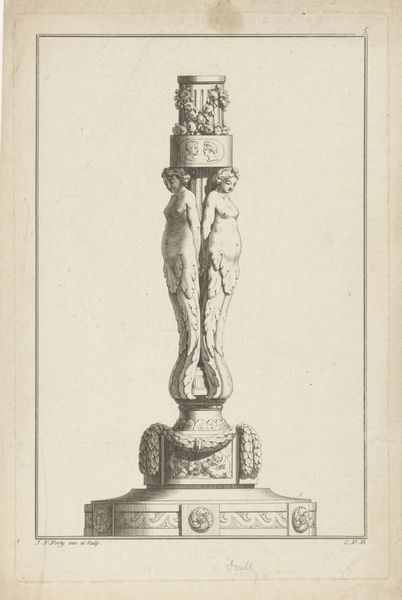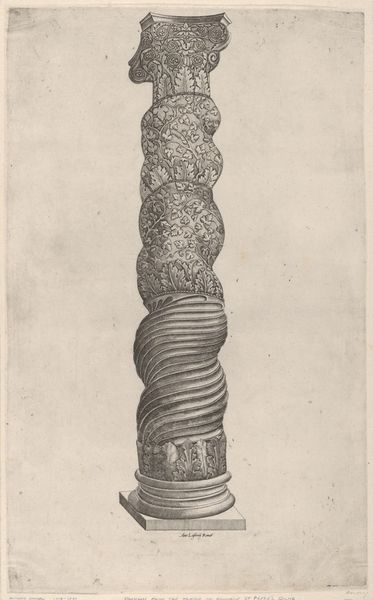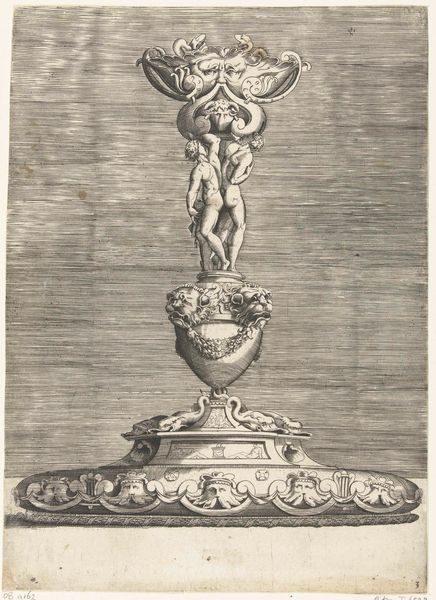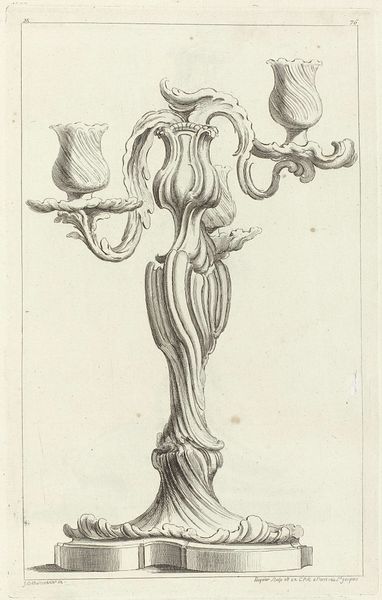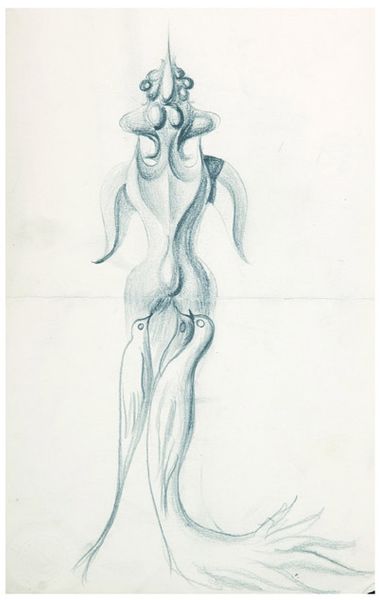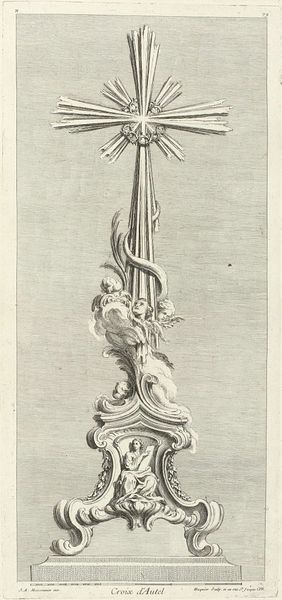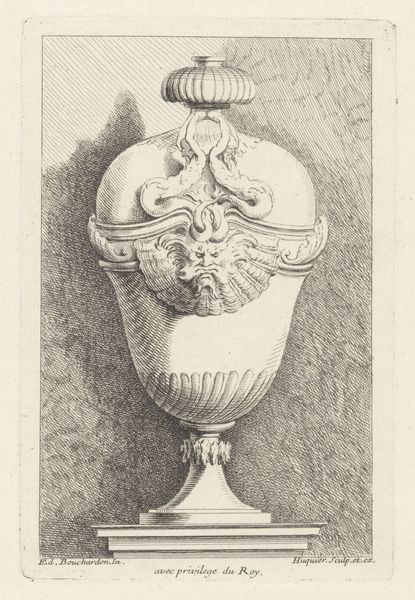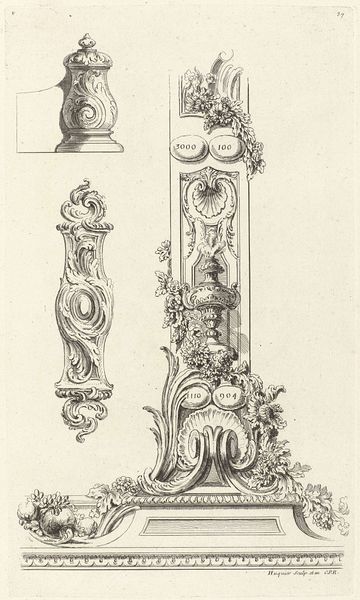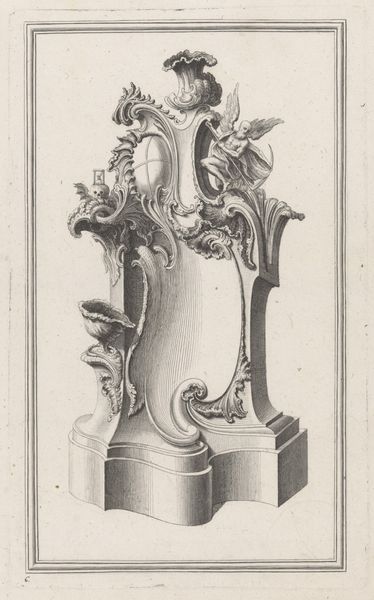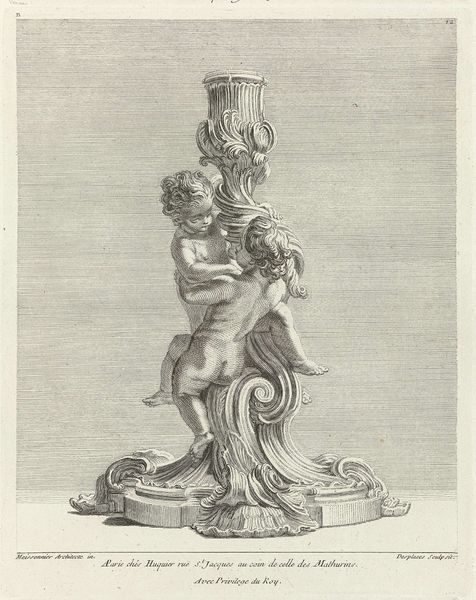
print, engraving
#
baroque
# print
#
form
#
pencil drawing
#
line
#
decorative-art
#
engraving
Dimensions: height 353 mm, width 236 mm
Copyright: Rijks Museum: Open Domain
Editor: Here we have Gabriel Huquier's "Ontwerp voor de voet van een kandelaar," or "Design for the Foot of a Candlestick," from sometime between 1738 and 1749. It's a print, an engraving to be exact. There's so much dynamism in what is essentially supposed to be a static object. What do you see in this piece? Curator: I see more than just a candlestick design; I see a reflection of the socio-political climate of the Baroque era. The excessive ornamentation, the swirling lines – it speaks to a desire for grandeur and power that was often expressed through material culture, reflecting an exclusive and oppressive class system. Does the overwhelming ornamentation strike you as more than just aesthetic? Editor: It does now! It’s easy to just see it as pretty at first glance. What is the role of ornament? Curator: Ornament often serves to distinguish and to create hierarchical structures. In this period, elaborate designs weren't just about beauty; they were a display of wealth, and consequently, a display of control. Imagine the light cast by a candle held in this design – who benefits most from the illusion of enlightenment it creates? Whose stories are told, and whose are silenced? Editor: That makes me think about how access to beauty itself can be a form of power. I never really considered the politics of candlestick design before. Curator: Exactly! Consider the labor involved, the resources extracted. Each element holds stories of production and consumption, echoing inequalities and cultural norms of its time. We must ask: who was this candlestick *really* for, and what did it symbolize to them and those excluded from its world? Editor: That's given me a lot to think about – thanks for widening my perspective. Curator: And thank you for your insights; analyzing art through multiple lenses helps us better understand history's influence.
Comments
No comments
Be the first to comment and join the conversation on the ultimate creative platform.
